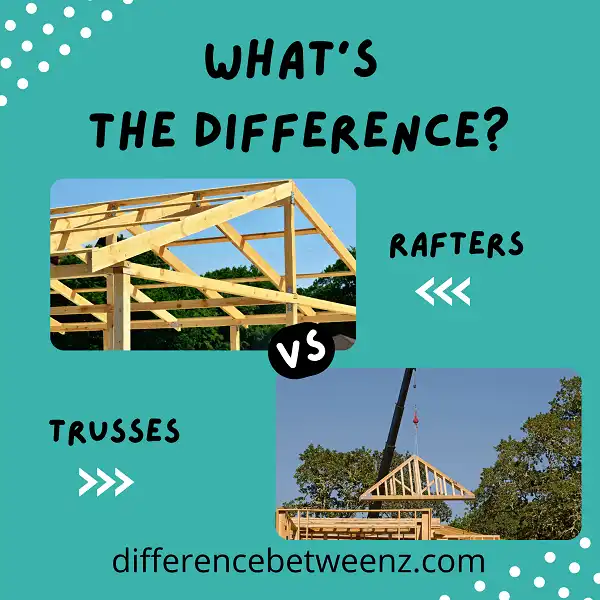When building a roof, there are two main types of framing members to choose from: rafters and trusses. Both have their own advantages and disadvantages, which is why it’s important to understand the difference between them before you make a decision. In this blog post, we’ll take a look at the key differences between rafters and trusses, so you can decide which is right for your project.
What are Rafters?
Rafters are one of the most important structural components of a roof. They are the sloping beams that support the roof deck and provide the framework for the roof system. Rafters are usually made of wood, but they can also be made of steel or concrete. Most rafters are cut at an angle, which helps to shed water and snow from the roof. Rafters are typically spaced 16 inches apart, but the exact spacing depends on the type of roofing material and the load that the roof is designed to support. Rafters must be strong enough to support the weight of the roof system, as well as any snow or ice that may build up on top of the roof. In addition, rafters must be properly secured to the wall plate and ridge board in order to provide a stable framework for the roof.
What are Trusses?
Trusses are triangular structures that are used to support loads. They are commonly used in the construction of bridges, roofs, and other structures where a high degree of strength is required. Trusses are able to provide this strength due to their inherent stability. WhenLoads are applied to a truss, they are distributed evenly throughout the structure. This prevents localized stresses from developing, which can lead to failure. Trusses are also relatively lightweight, making them easier to transport and install. This makes them an ideal choice for use in many different applications.
Difference between Rafters and Trusses
Rafters and trusses are two of the most commonly used structural elements in construction. Though they may appear similar at first glance, there are several key differences between rafters and trusses. Rafters generally run from the peak of a roof to the wall plates, while trusses are composed of multiple rafters joined together. Trusses are also often prefabricated, while rafters are typically made on-site. In addition, rafters are generally nailed or screwed into place, while trusses are often connected with metal plates or brackets. As a result of these differences, rafters and trusses serve different purposes in construction. Rafters provide support for roofing materials, while trusses help to distribute the weight of the roof evenly. Knowing when to use rafters or trusses is essential for any construction project.
Conclusion
The rafters and trusses are two different types of roofing systems that are often confused with each other. Both have their own unique benefits and drawbacks, so it’s important to understand the difference before you decide which is right for your home.


